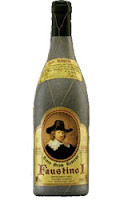As many of you know, I am often hired to conduct wine tasting events. This week, I had the opportunity to direct a tasting for the top producers of a healthcare insurance provider. It was a small tasting, for only ten people. When I was called, and asked to organize the event, they had requested a tasting that would help the employees learn more about wine, wine pairing, and wine tasting. It was left wide open for what wines, foods and total expenditure (but I was told to get "good wine").
Now normally, I try to expose people to new grape varieties they may not have tried, but this go around, I settled on more basic wines. I determined that I wanted to cover as many different styles as I could, without getting the group drunk. So, I limited it to six bottles of wine. To cover the range of styles, I decided to go with a semi-sweet/high acid wine, to start the discussion about how the palate recognizes different aspects of a wine. Riesling has both acidity and residual sugar. The second wine had to have more body, but I also wanted to generate discussion about malolactic fermentation, and the buttery oaky flavors found in wine. A California Chardonnay would do the trick here.
Bridging the gap between white and red wine, I had to go with a rose. There is still that impression that roses are sweet, so a dry rose from Southern France would do the trick. When it came to the red wines, I knew I needed to go with a lighter red, and a heavy red, but also wanted to have wines that emphasized fruit, and some that emphasized earthiness (or terrior). Additionally, I wanted to share an aged red, to generate discussion about aroma versus bouquet. In an effort to keep the group from being influenced by the wine label, I put all the wines in bags, and revealed the wine after each one was tasted.
 |
| Cheese Platter |
The second platter was my meat tray. I wanted to do a fatty meat, a smoked meat, and a salty meat. I chose a salami from a local producer for my fatty meat, and decided to go with a smoked salmon for the smoky meat. The salty meat was prosciutto. To this tray, I added some marinated mushrooms and water crackers.
 |
| Meat Platter |
The wines that were served at this event were:
Dr. Loosen JL Wolf Pechstein Pfalz Riesling 2010
Trinitas Carneros Chardonnay 2010
Les Vignes des Precheurs Tavel 2010
Domaine Drouhin Pinot Noir 2008
Faustino Rioja Gran Riserva 1999
Nickel & Nickel Branding Iron Oakville Cabernet Sauvignon 2008
With a larger group, I would add three more wines to the mix. I think a nice example of sparkling wine, and two examples of a fortified wine (probably a Port and a dry Sherry) would really add to the understanding of the different styles of wine. By adding those extra wines, I would add some green olives to the platter, maybe some shrimp, and definitely milk chocolate and bitter chocolate (to emphasize that sweetness of the wine, versus the sweetness of the food).
It was fun evening, with a lot of discussion, and, based on the comments, people really enjoyed the tasting, while learning something new about wine. We talked about ordering in restaurants, and wine stores, and how learning just a few new terms, and tasting techniques, can really make a difference in your appreciation of wine.
I hope you will use this tasting example, and try putting together your own event. If you'd like a Sommelier there to guide your through the process...give me a call, or send me an e-mail!





"Engaging and well-researched!
ReplyDelete